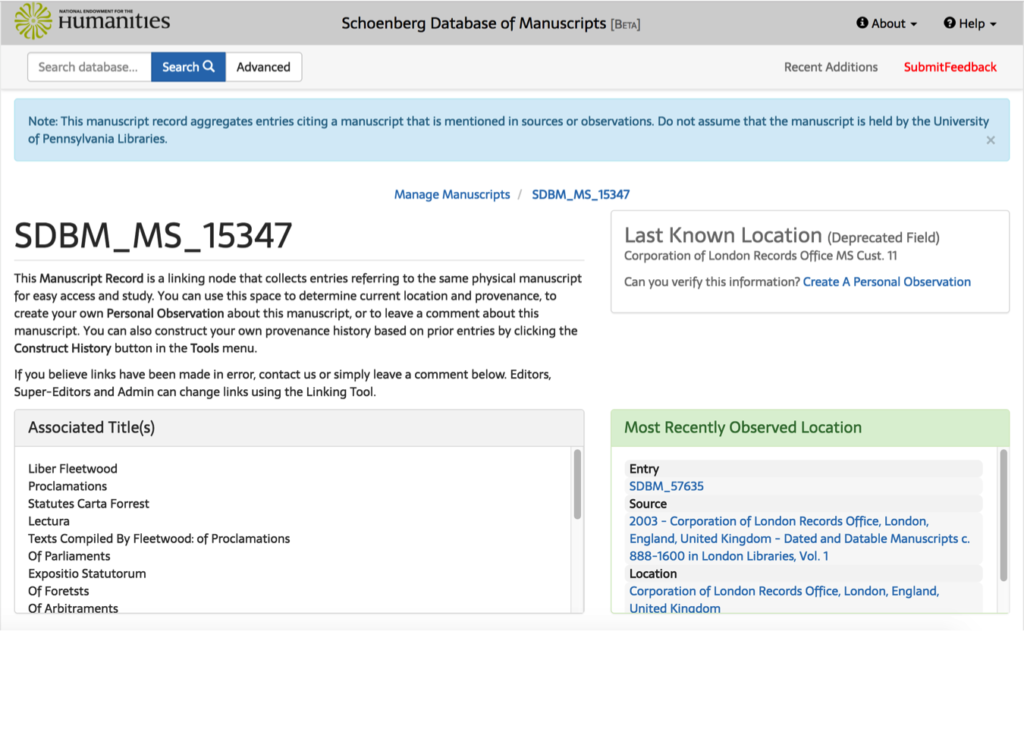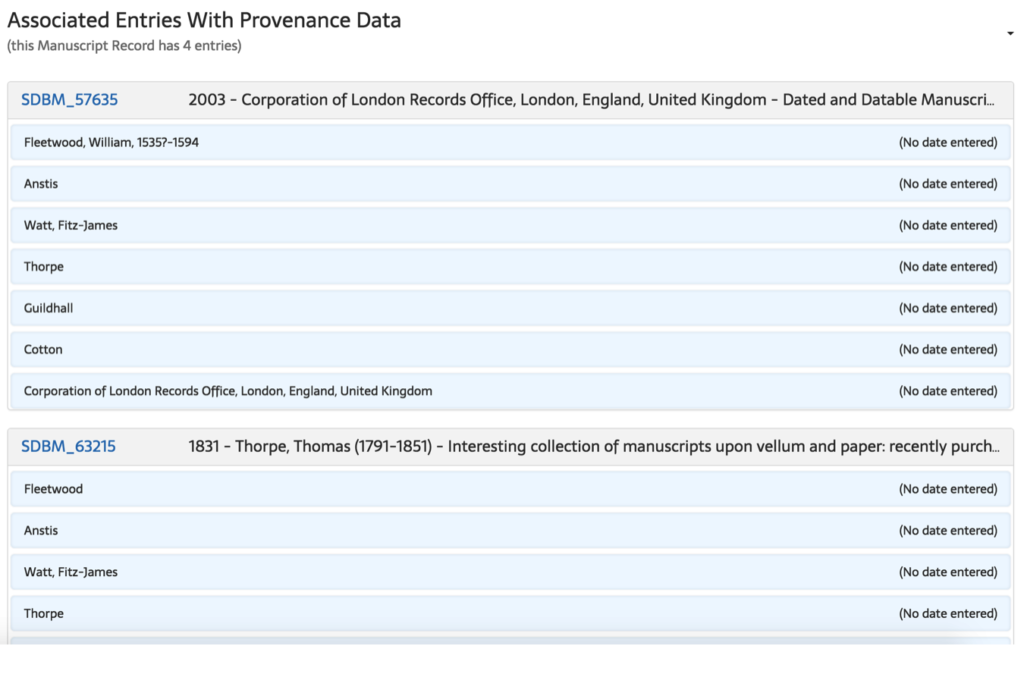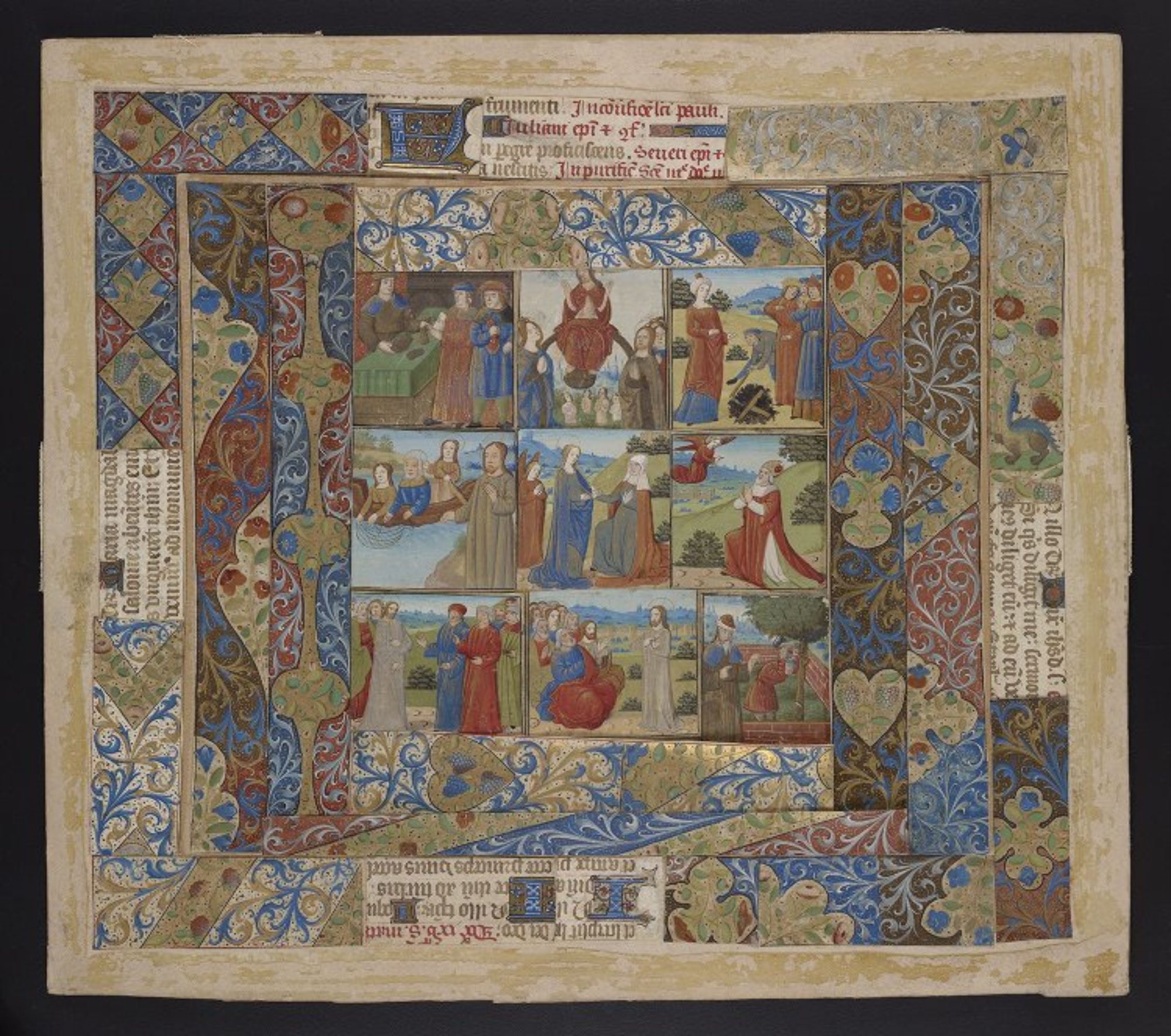The text of a lightning talk originally presented at The Futures of Medieval Historiography, a conference at the University of Pennsylvania organized by Jackie Burek and Emily Steiner. Keep in mind that this was very lightly researched; please be kind.
Rather than the originally proposed topic, the historiography of medieval manuscript descriptions, I will instead be talking about the historiography of medieval manuscripts specifically in England and the USA, as perceived through the lens of manuscript descriptions.
We’ll start in the late 12th into the 15th century, when monastic houses cataloged the books in their care using little more than a shelf-list. Such a list would be practical in nature: the community needs to be able to know what books they own, so as books are borrowed internally or loaned to other houses (or perhaps sold) they have a way to keep track of them. Entries on the list would be very simple: a brief statement of contents, and perhaps a note on the number of volumes. There is, of course, an entire field of study around reconstructing medieval libraries using these lists, and as the descriptions are quite simple it is not an easy task.
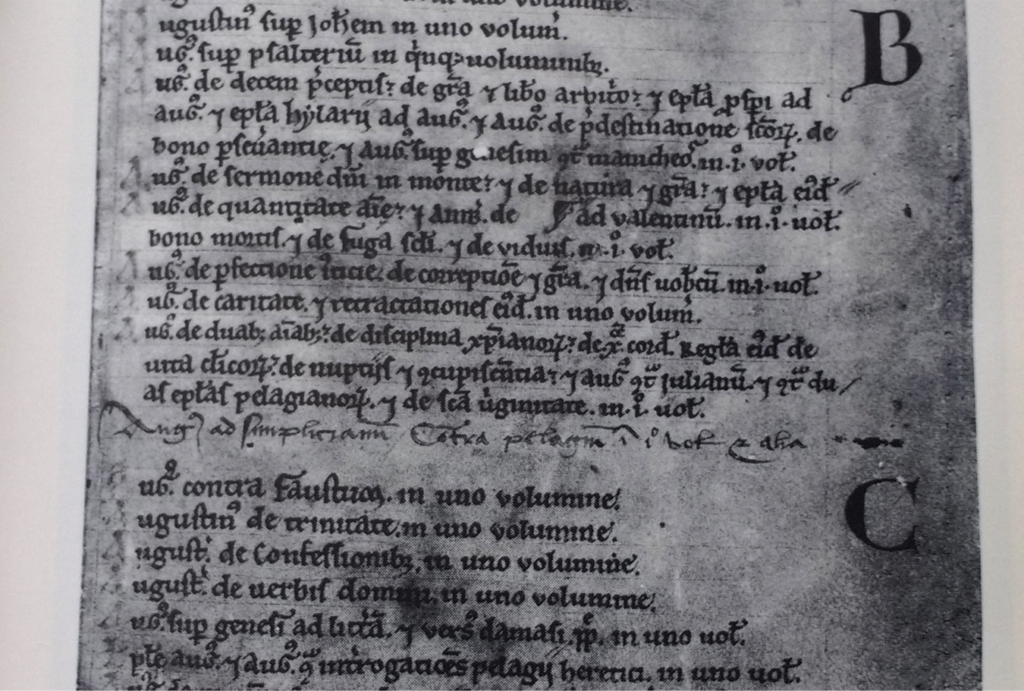
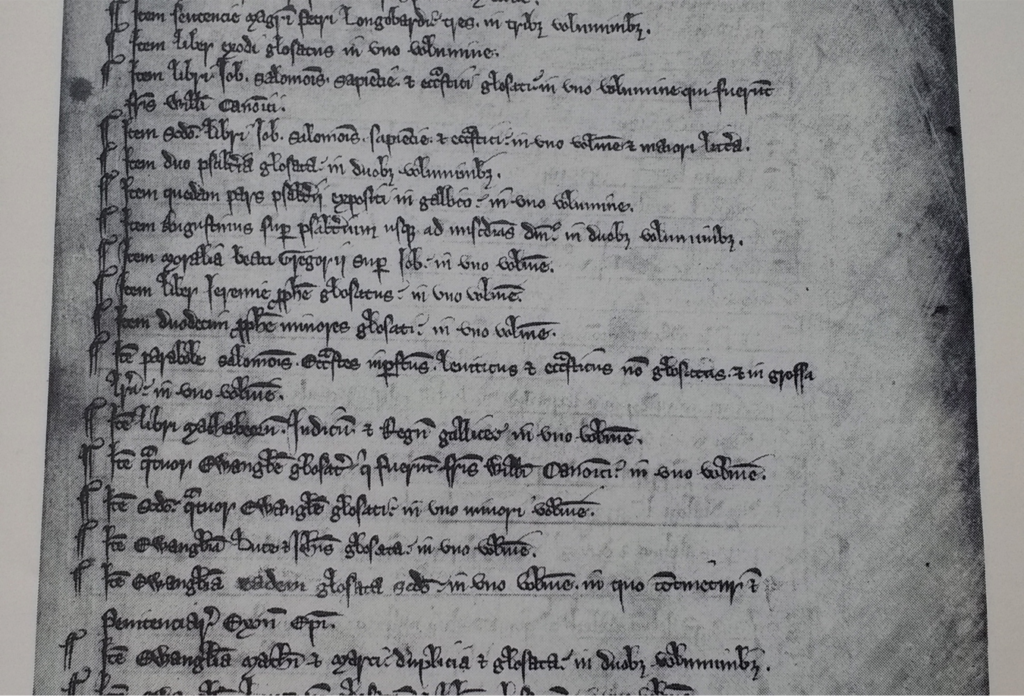
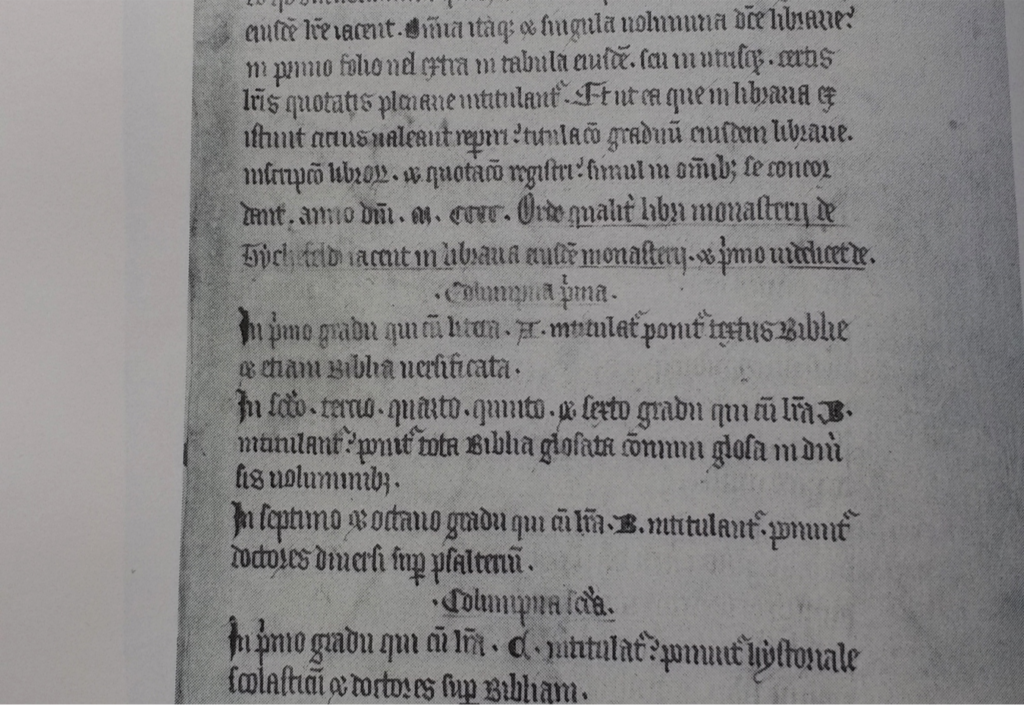
In the 15th and 16th centuries there were two major historical events that I expect played a major role both in a change in the reception of manuscripts, and in the development of manuscript descriptions moving forward: those are the invention of the printing press in the mid-15th century, and the dissolution of the monasteries in the mid-16th century. The first made it possible to relatively easily print multiple copies of the same book, and also began the long process that rendered manuscripts obsolete. The second led to the transfer of monastic books from institutional into private hands, and the development of private collections with singular owners. When it came to describing their books, these collectors seemed to be interested in describing for themselves and other collectors, and not only for the practical purpose of keeping track of them. Here is a 1697 reprint of a catalog published in 1600 of Matthew Parker’s private collection (bequeathed to Corpus Christi College Cambridge in 1574). You can see that the descriptions themselves are not much different from those in the manuscript lists, but the technology for sharing the catalog – and thus the audience for the catalog – is different.
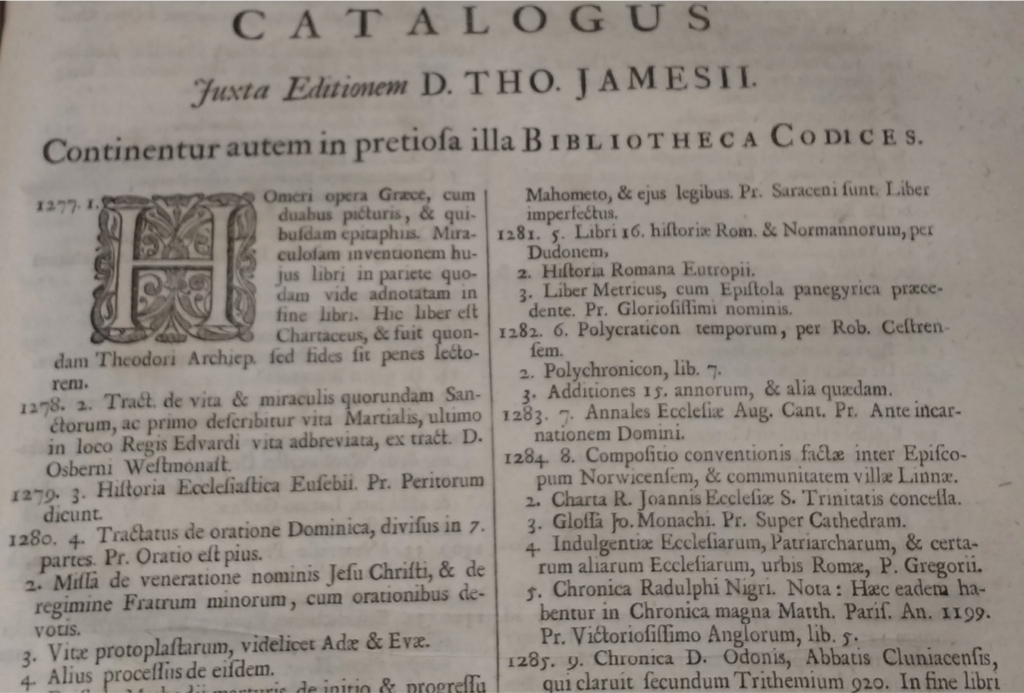
In the later 16th and into the 17th century these private manuscript collections began to be donated back to institutions (educational and governmental), leading to descriptions for yet other audiences and for a new purpose: for institutions to inform scholars of what they have available for their use. The next three examples, from three catalogs of the Cotton Collection (now at the British Library) reflect this movement. The first is from a catalogue published in 1696, the content description is perhaps a bit longer than the earlier examples, and barely visible in the margin is a bit of a physical description: this is a codex with 155 folios. Notably this is the first description we’ve looked at that mentions the size of the book at all, so we are moving beyond a focus only on content. This next example, from 1777, is notable because it completely forefronts the contents. This catalog as a whole is organized by theme, not by manuscript (you can see below the contents listed out for Cotton Nero A. i), so we might describe it as a catalog of the collection, rather than a catalog of the manuscripts comprising the collection.
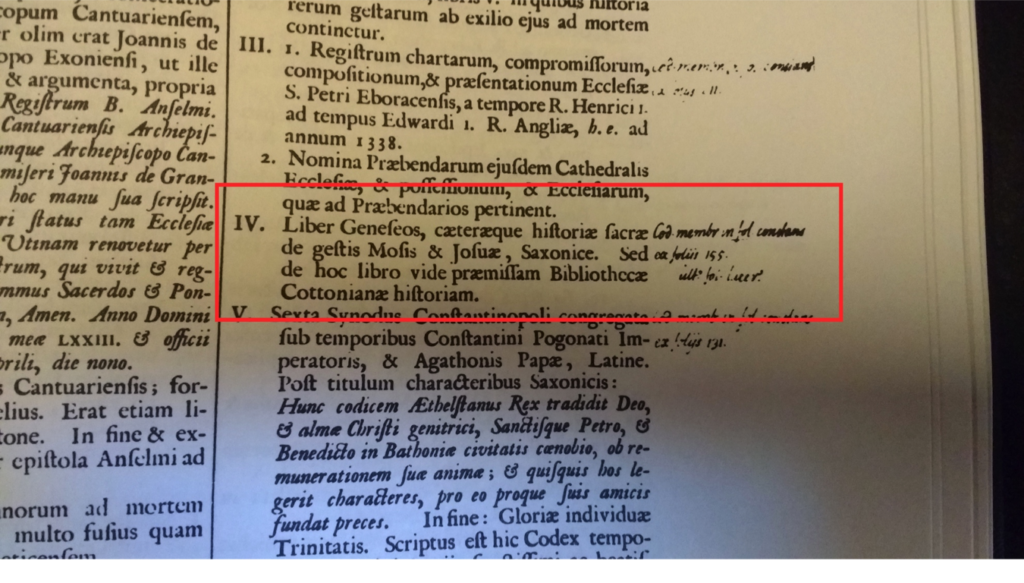
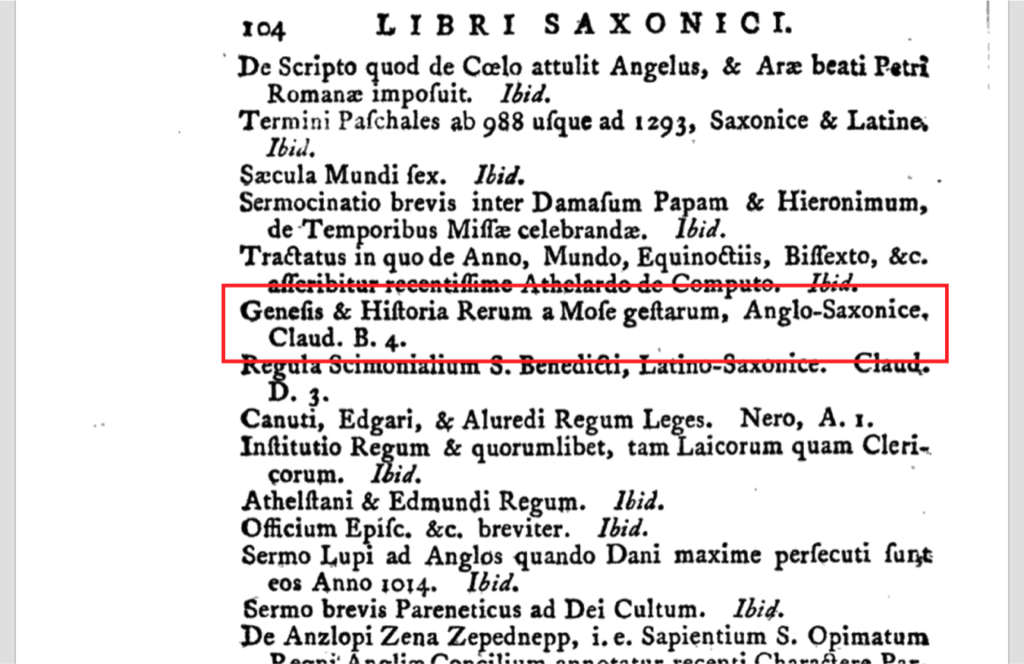
The third example is from the 1802 catalog, and although it’s still in Latin we can see that there is more physical description as well as more detail about the contents and appearance of the manuscript. There is also a citation to a book in which the preface on the manuscript has been published – the manuscript description is beginning to look a bit scholarly.
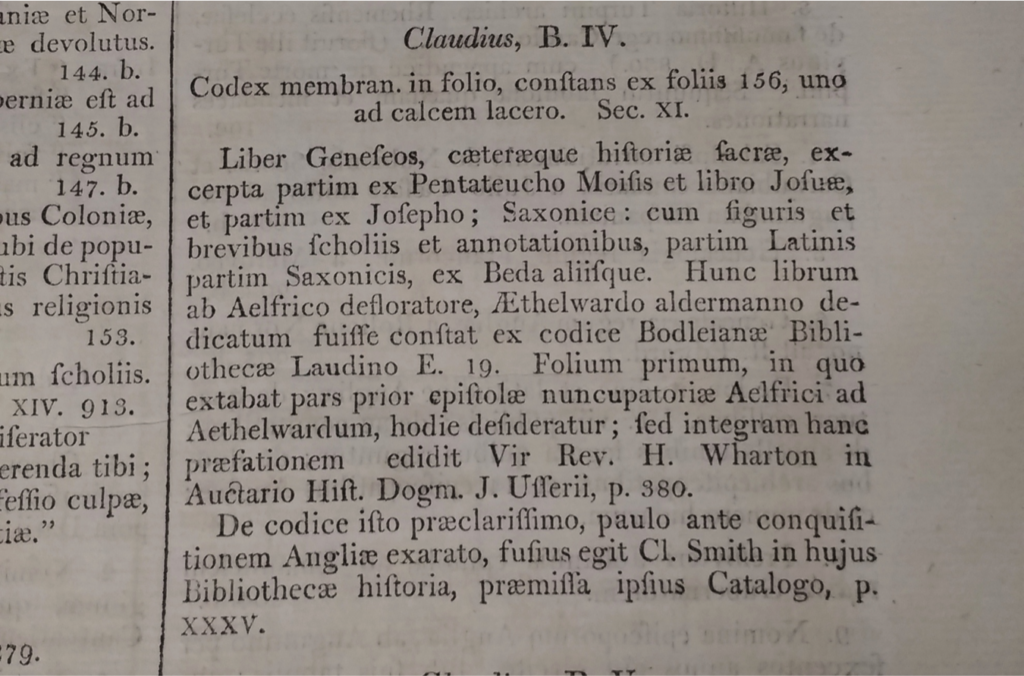
We’ll jump ahead 150 years, and we can see in that time that concern with manuscripts has spread out from the institution to include the realm of the scholar. This example is from N.R. Ker’s Catalogue of Manuscripts Containing Anglo-Saxon, rather than focusing on the books in a particular collection it is focused on a class of manuscripts, regardless of where they are physically located. The description is in the vernacular, and has more detail in every regard. The text is divided into sections as well: General description; codicological description; discussion of the hands; and provenance.
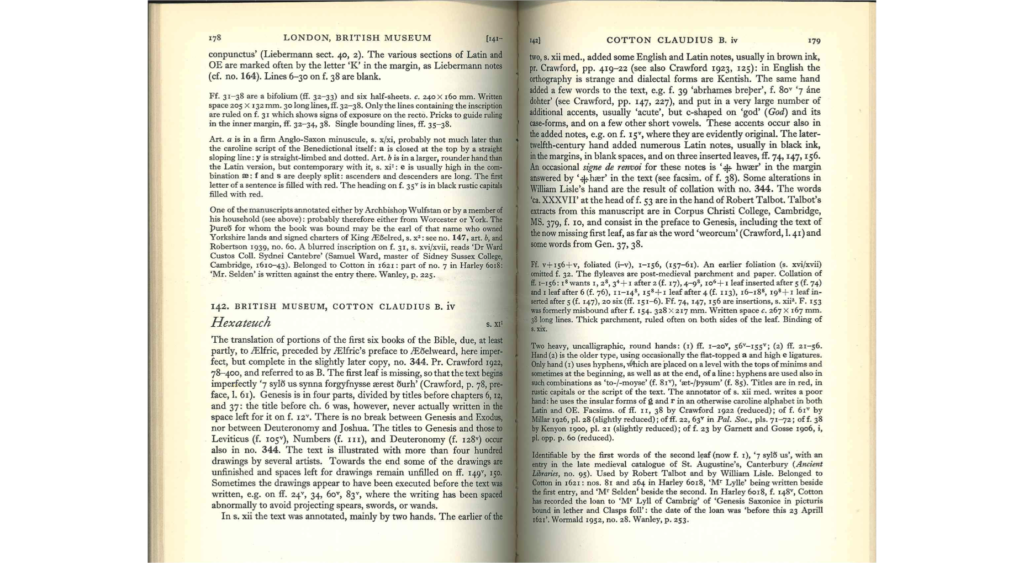
And now we arrive at today, and to the next major change to come to manuscript descriptions, again due to new technology. Libraries around the world, including here at Penn, are writing our manuscript descriptions using code instead of on paper, and publishing them online along with digital images of the manuscript pages, so people can not only read about our manuscripts, but also see images of them and use our data to create new things. We use the data ourselves, for example in OPenn (Primary digital resources available to everyone!) we build websites from our manuscript descriptions to make them available to the widest possible audience.
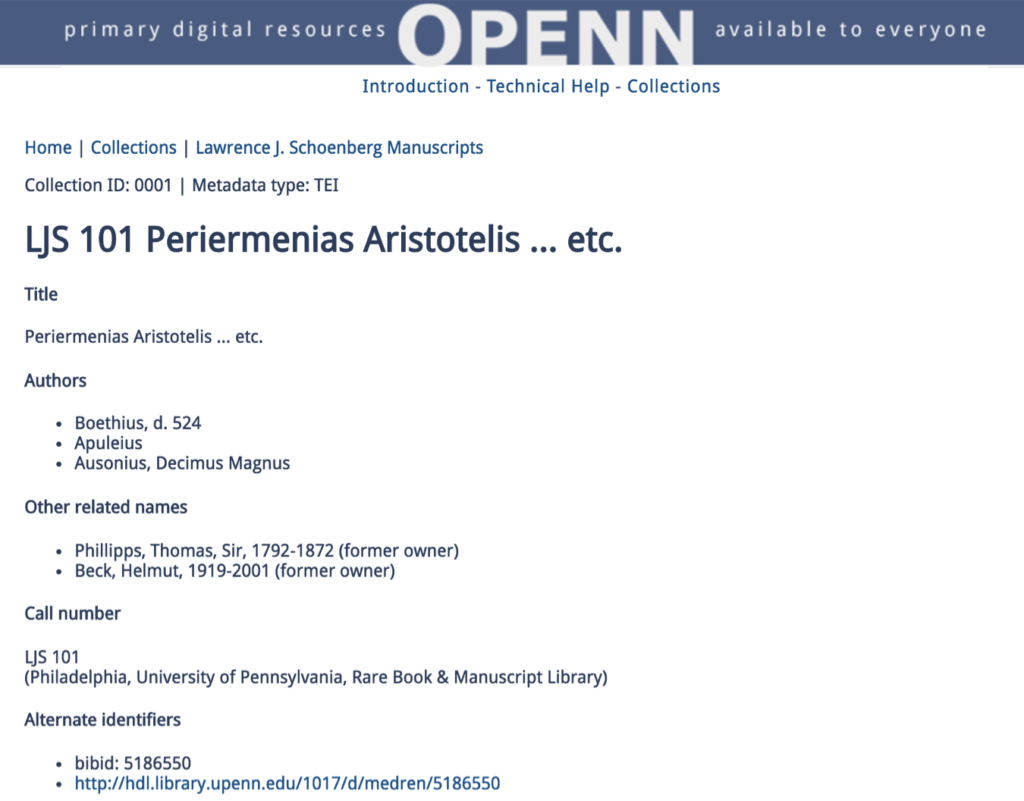
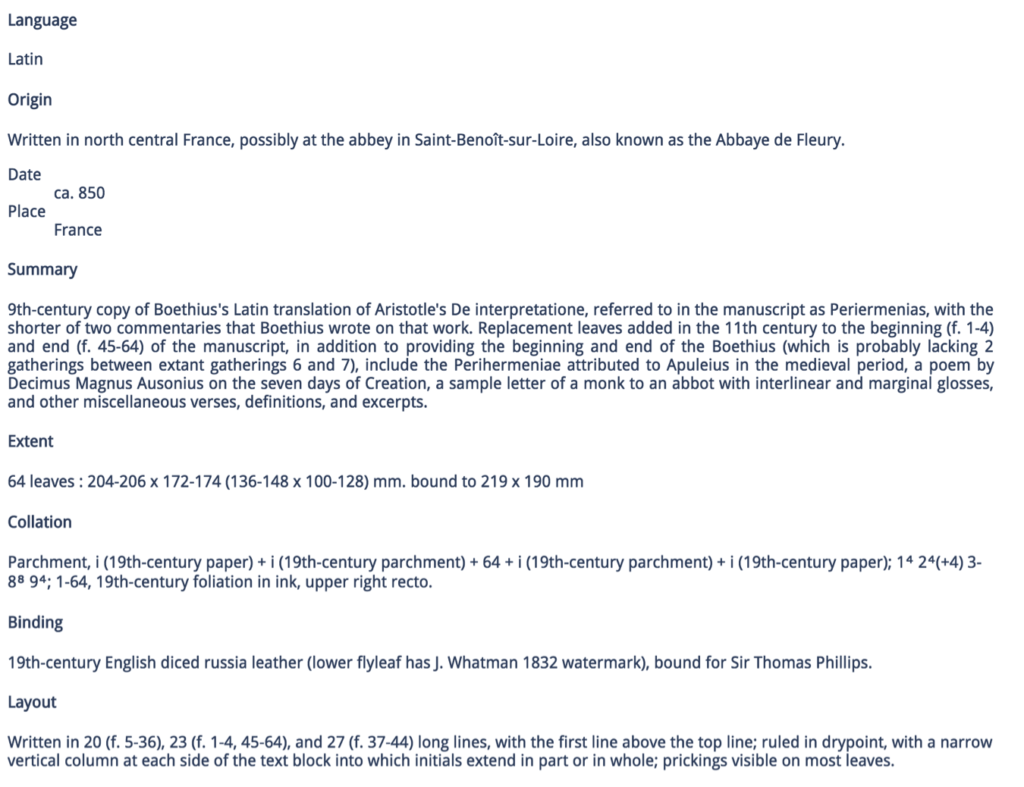
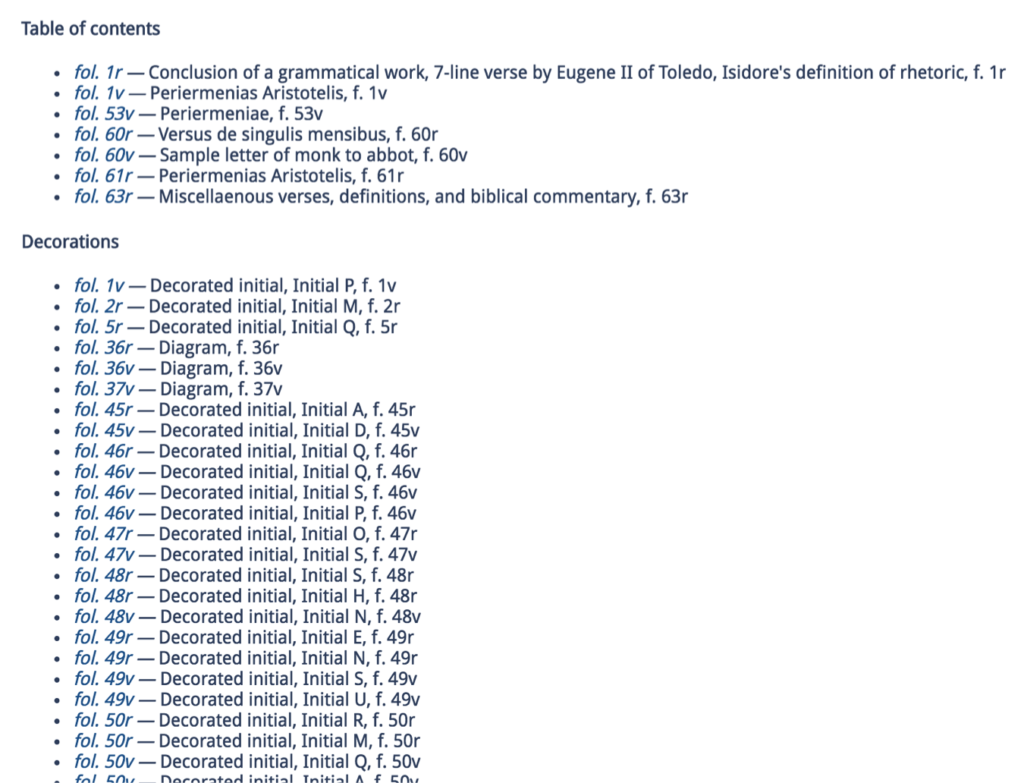
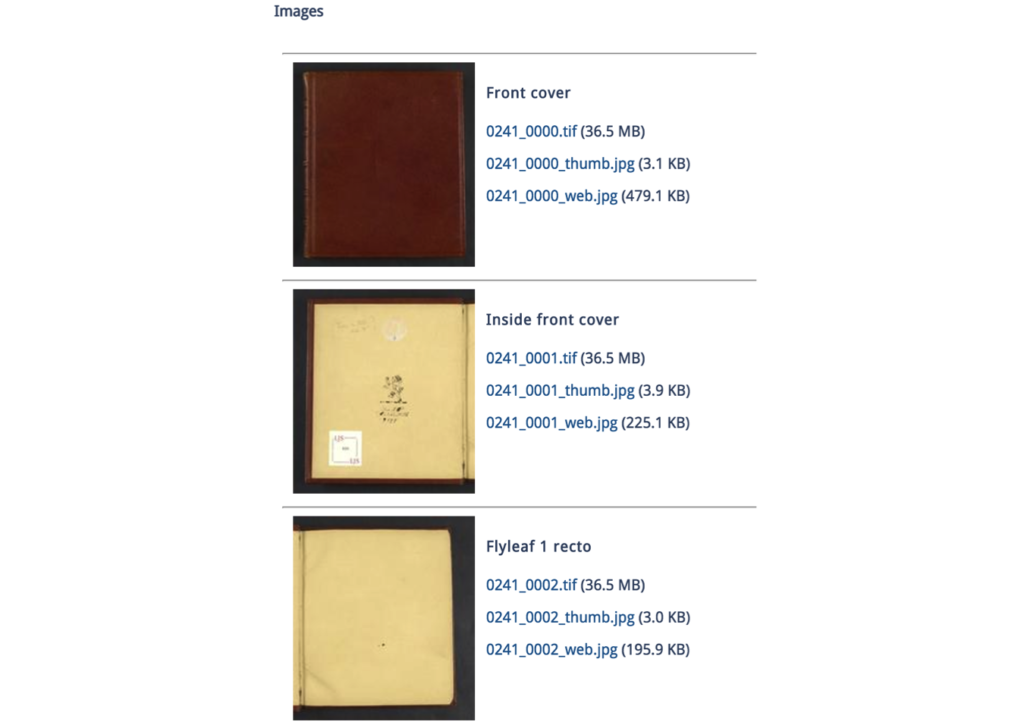
I want to close by giving a shout-out to the Schoenberg Database of Manuscripts, directed by Lynn Ransom, which is pushing the definition of manuscript descriptions in new scholarly directions. In the SDBM, a manuscript is described temporally, through entries that describe where a book was at particular moments in time (either in published catalogs, or through personal observation). As scholarly needs continue to change, and technology makes new things possible, the description of manuscripts will likewise continue to change around these, even as they have already over the last 800 years.
